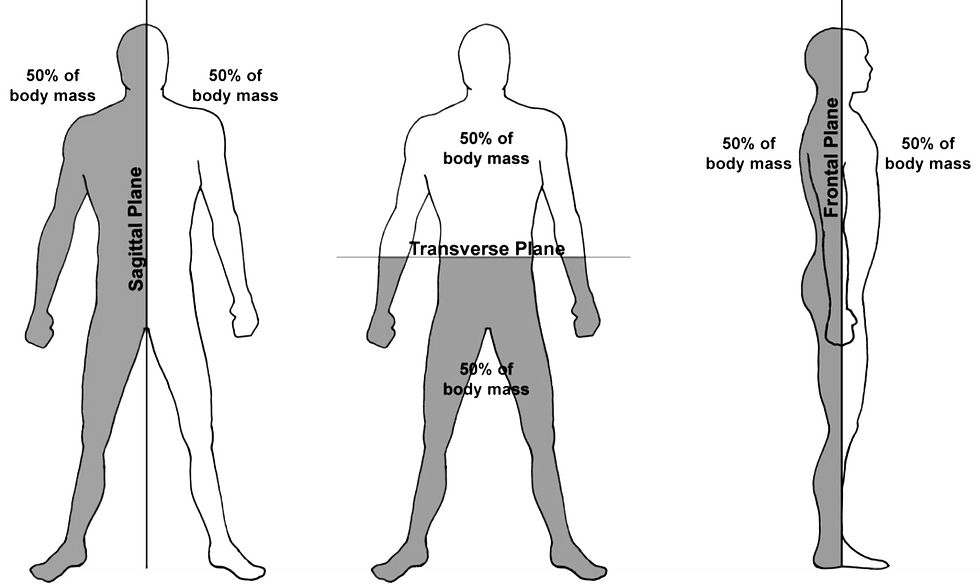Want Real Progress? Stop Adding Weight and Start Changing Movement Direction
- Mike Mackey
- Jul 12, 2021
- 6 min read
It’s been an arduous 15-16 months, but it appears that finally, we may be on the brighter side of this pandemic.
Unless you were lucky enough to live in an area that was relatively unaffected by COVID-19, or you had full access to the equipment that you were normally using, your overall fitness has deteriorated on some level.
Your strength has likely decreased.
Your endurance probably isn’t what it used to be.
Those aches and pains may be more prevalent than ever.
Hell, even your day-to-day energy and mood levels have taken a dive.
Don’t worry - it happened to me too. All of the above.
The one aspect however, that has likely gone through the roof is your motivation to “get back to where you used to be.”
While motivation can be a great tool to help you get started again, it can also be a slippery slope that often results in doing too much, too soon.
If I were to venture a guess, I’d say that most people will immediately dive back into a program that relies heavily on deadlifts, squats, lunges, pull-ups or bench pressing - or some variation using the same muscle groups.
While there isn’t inherently anything wrong with those exercises, most programs heavily rely on movement in one direction - usually front-to-back.
Excessive pushing, pulling, squatting and hinging in one direction limits how you can make exercises more challenging, so the answer usually ends up being adding more weight until you physically can't do any more.
This almost always results in movement pattern limitations, stalled progress (usually fairly quickly), and in most instances, probable injury.
Not to mention that most people also train their core in one direction, as well. (I’m looking at you sit-ups... but I'll leave that for a future post)
If your strength has plateaued, constantly adding weight to the equation in hopes of the problem taking care of itself is NOT the best approach.
Try looking at your movement quality from multiple angles and testing your abilities in different directions instead.
True, sustainable strength involves the shoulders, torso and hips working together across the three planes of motion: Sagittal, Transverse and Frontal.
1.. The Sagittal Plane splits the body to create left and right sides, creating “front-to-back” motion. Sagittal plane movements include flexion and extension.
2. The Transverse Plane bisects the body to create upper and lower halves, creating a vertical axis that provides rotational movement.
3. The Frontal Plane splits the body to create the front and back halves, creating an axis that requires the body to move laterally or “side-to-side."

As mentioned, most people spend the vast majority of their time doing movements in one direction - the sagittal plane. If you were to name some of your favourites exercises, odds are they involve movement in this direction.
Squats. Deadlifts. Lunges. Pushups. Pullups. Situps.
All of them.
But before I get into examples of exercises and movement directions, let us first explore why people don't spend more time doing exercises in the frontal and transverse planes to begin with.
There is often a very simple answer: too much ego and not nearly enough patience!
Lateral movement - especially using the lower body - can be very humbling, especially for people who are used to squatting and deadlifting some serious weight.
So, how should you change it up? And more importantly, why is changing direction important anyway?
Because life doesn't happen in one direction.
Think about it for a second.
Playing different kinds of sports, playing with your kids or getting down on the dance floor at a friends wedding.
Don't get me started on icy winters in Eastern Canada.
They all require some element of balance and stability, and the ability to maintain control while changing direction.
Specifically, rotation and side-to-side movement requires a level of core and hip stability that's virtually impossible to grasp unless you practice it.
You can be very strong without being stable - I know a ton of guys who can deadlift twice their bodyweight, but probably can't do a lateral lunge without some sort of assistance.
This usually sets people up for disaster.
It's great if you were able to set a new personal best, but it doesn't mean shit if it doesn't transfer over to your every day life.
The best part about changing up the direction of your movement (aside from real world application) is that it will also make you stronger in general.
Increasing strength and stability of your core, hips and shoulders will undoubtedly transfer over into your heavier lifts, like squats, deadlifts and pressing.
It will also make you more resilient to injury and help you recover quicker, primarily by breathing life into smaller muscle groups that don't get nearly enough love and respect.
But enough about all of that - if you want to learn more, book a virtual consultation with me and I'll help you discover what you're missing from your current routine.
Odds are, it's a small fix that can result in a major impact!
Next up - let's see what movements in different directions looks like below. Check out a few examples of exercises from different planes of motion.
It's certainly not all-inclusive, but it's a great place to start to help you better understand the types of movement you should be intelligently working into your routine.
The Lateral Lunge (Frontal Plane)
Primary Benefits: Hip Stability and mobility, Core stability, Lower leg strength, Balance and coordination
Real World Application: Playing sports, walking on uneven/slippery surfaces, walking uphill/stairs
The FFE Reverse Lunge (Sagittal Plane)
Primary Benefits: Hip Stability and mobility, Core stability, Lower leg strength and mobility, Balance and coordination
Real World Application: Playing sports, walking on uneven/slippery surfaces, walking uphill/stairs
The Cable Chop (Transverse Plane)
Primary Benefits: Hip Stability and mobility, Core stability, Spinal stability and mobility, Coordination of Upper/Lower body movement
Real World Application: Playing sports, Activities of daily living (ADLs) such as lifting, transferring weight from side to side, and walking with a weighted load
The bottom line with this topic is usually one that most people don't want to hear but:
Working different movement patterns and changing direction is:
i) very challenging for many people,
ii) requires a lot of practice,
iii) takes time and effort to master.
Personally, it has taken me almost two years to work it effectively into my current routine, specifically lateral (side-to-side) movement. After many years of excessive running, ineffective strength training, and playing sports that resulted in overuse injury, I decided it was time to hit 'reset.'
The result?
At 34 (and a half) years old, I can honestly say I'm in the best shape of my life.
And by "best shape", I don't just mean getting 'ripped' and muscular.
My overall strength has increased - specifically in the single-leg stance, my ability to press overhead, and stabilizing my core in a variety of different movements and positions.
I sleep better, because I made a consistent effort to monitor the types of things that could effect it negatively - like eating late at night or drinking alcohol.
This allows me to recover quicker - or at the very least, better recognize when my body isn't prepared to train on a given day.
This process has helped me identify that strength training every 36-48 hours is the most effective plan for myself - full body workouts hitting the major movement patterns and accessory work for trouble areas - which everyone has.
In between bouts of strength training, I either do low-intensity cardiovascular training (Zone 2; 60-70% HRmax), play a sport like ball hockey or softball, work on my thoracic mobility, or sometimes, nothing at all!
Training this way has allowed me to be virtually pain free - and when I'm not, I understand why, and more importantly, I know the type of things I need to do in order to feel better.
My resting heart rate is in the low 40s - not only because of a balance of strength training, cardio and eating right (most of the time anyway), its because I have learned how to recognize when I'm stressed out.
By recognizing it, you can better plan how to combat it - go for a walk, talk with a loved one or playing an instrument. It doesn't matter, as long as it allows you to feel better.
All of this is to say that measuring stick for "health and fitness" is starting to change.
People are finally starting to realize that training 7 days a week isn't optimal for 99% of the population, no matter how many programs and influencers call for "no days off."
If you can't measure it, you can't manage it.
But if you measure it, and fail to recognize markers of decreased performance, that's an entirely different problem altogether.
The inability to move in different directions with proficiency is a marker of decreased performance, mainly because there is an underlying reason that people have a tough time figuring it out on their own.
Hell, it took me years to recognize my own faults, and even then, it took a little while longer to buy into the premise that it was a long-term game.
There were plenty of days I wanted to quit, or I wasn't motivated, because I wasn't doing my favourite exercises anymore.
And it is the best thing I could have done.
I often tell my clients that the exercises they hate are often the ones giving them the most benefit, and are usually the ones that requires the most practice.
When I started treating myself as one of my own clients, I got the results I wanted, plus the ones that I didn't know I needed.
My only regret? Not doing it sooner.
The good news is that its never, ever too late to start.







Comments